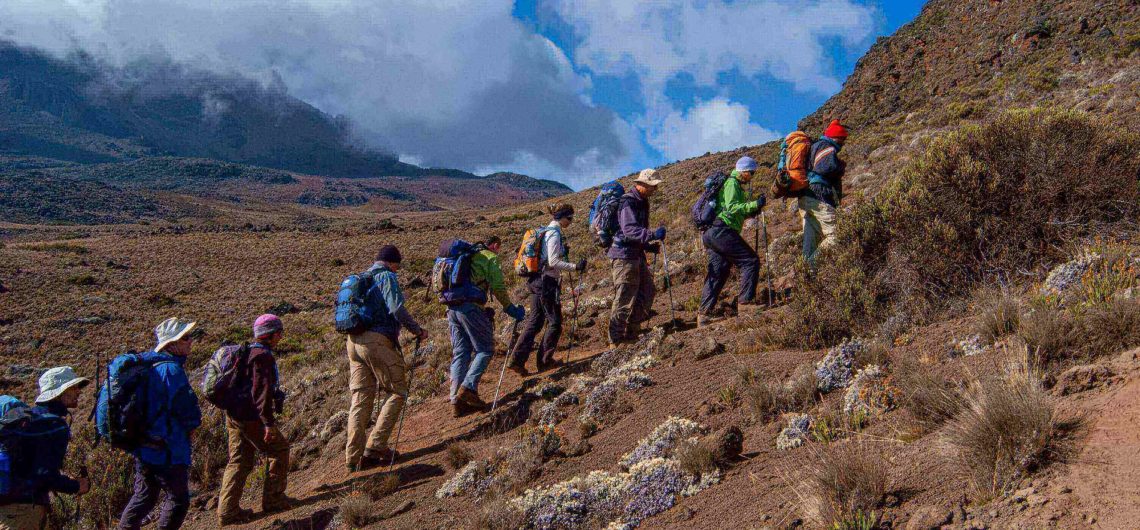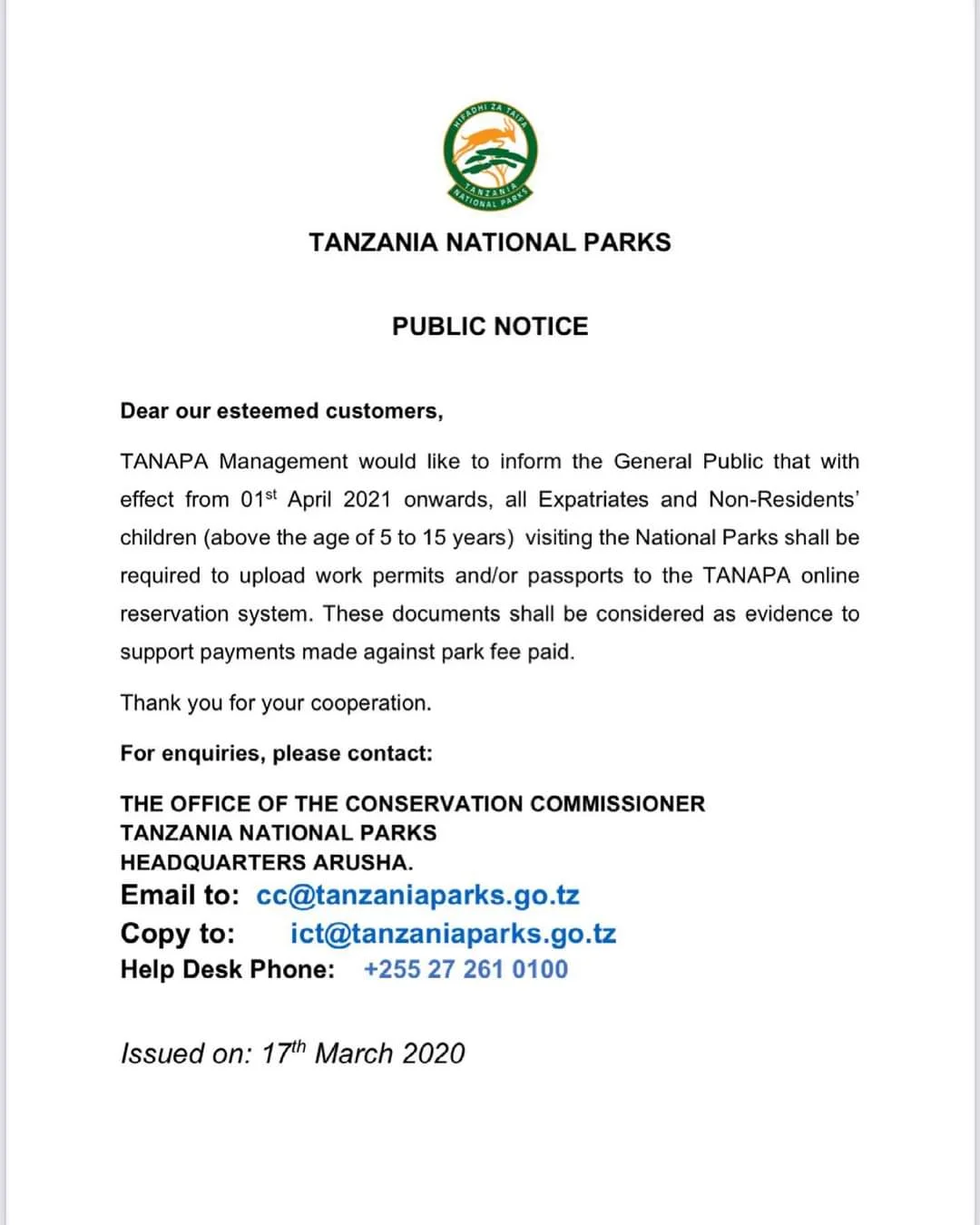Do you really need a permit to climb Kilimanjaro? The answer is a resounding “Yes!” Obtaining a permit is not only mandatory but also crucial for several reasons. The Tanzanian government, in collaboration with the Kilimanjaro National Park Authority, has established strict regulations to ensure the preservation of the natural environment and the safety of climbers.
By requiring permits, the authorities can regulate the number of climbers, monitor the impact on the mountain, and ensure a sustainable climbing experience for future adventurers. Additionally, the fees collected from permits contribute to the conservation efforts and maintenance of the park’s infrastructure.
NB: The costs for your Kilimanjaro climb with Tranquil Kilimanjaro includes all the permit fees in the total cost of the itinerary. We will book the permits for you. All you have to do is show up and concentrate on your climb.
More about Kilimanjaro Park fees
Understanding Kilimanjaro National Park
Kilimanjaro National Park is a UNESCO World Heritage site and spans an area of approximately 756 square kilometers. The park is home to Mount Kilimanjaro, a dormant volcano and one of the coveted Seven Summits. It boasts diverse ecosystems, including rainforests, alpine meadows, and arctic-like landscapes, making it a unique and awe-inspiring destination.
The park authorities are responsible for managing and preserving the delicate ecosystems and wildlife within the park boundaries. To ensure the sustainability of tourism and protect the environment, they enforce regulations and guidelines, including the requirement of permits for climbers.
More about Kilimanjaro National Park
 How to Obtain a Permit
How to Obtain a Permit
To obtain a permit for climbing Kilimanjaro, you need to follow a structured process. Here’s a step-by-step guide to help you navigate the permit application:
- Choose a Kilimanjaro climbing route: Before applying for a permit, decide on the route you wish to take. Kilimanjaro offers various routes, each with its own characteristics and difficulty levels.
- Select a reputable tour operator: It’s essential to choose a licensed and experienced tour operator who will handle the permit application on your behalf. They will guide you through the process and ensure compliance with all regulations.
- Provide necessary documentation: Your tour operator will assist you in preparing the required documents, including a completed permit application form, a copy of your passport, and any additional permits if you plan to engage in activities such as camping or filming.
- Pay the permit fees: The cost of the permit varies depending on the chosen route, the number of days, and the nationality of the climber. The fees cover park entry, camping, rescue services, and conservation efforts. Ensure that you make the payment through authorized channels.
- Await confirmation: After submitting the application and fees, the tour operator will handle the processing of your permit. Once approved, you will receive a confirmation letter, which you should carry with you during the climb.
Remember, it’s crucial to initiate the permit application process well in advance to secure your spot and make necessary preparations for your Kilimanjaro adventure.
Frequently Asked Questions (FAQs)
- Do you need a permit to climb Kilimanjaro?
- Yes, a permit is required to climb Kilimanjaro. It is obtained through a licensed tour operator who will handle the permit application process on your behalf.
- How much does a permit to climb Kilimanjaro cost?
- The cost of a permit varies depending on factors such as the chosen route, the number of days, and the nationality of the climber. It typically covers park entry fees, camping fees, rescue services, and conservation efforts.
- What documents are required to obtain a permit?
- You will need a completed permit application form, a copy of your passport, and any additional permits if you plan to engage in activities such as camping or filming.
- How long does it take to climb Kilimanjaro?
- The duration of the climb varies depending on the route chosen. On average, it takes around 6 to 8 days to climb Kilimanjaro, allowing for proper acclimatization.
- Is climbing Kilimanjaro dangerous?
- Climbing Kilimanjaro poses risks, primarily related to altitude sickness. However, with proper preparation, experienced guides, and adherence to safety protocols, the risks can be minimized.
- What is the success rate of climbing Kilimanjaro?
- The success rate varies depending on factors such as the chosen route, climber fitness, and proper acclimatization. On average, the success rate ranges from 60% to 70%.
Climbing Kilimanjaro is a remarkable adventure that offers breathtaking views and a sense of accomplishment. However, it requires careful planning, adherence to safety measures, and obtaining the necessary permits.
Ensure you choose a licensed and experienced tour operator who will handle the permit application process and guide you throughout the climb. Select a route that suits your preferences and fitness level, and prioritize your safety by acclimatizing properly and following the guidance of your guides.
Remember, climbing Kilimanjaro is not just about reaching the summit; it’s about embracing the journey, immersing yourself in the natural beauty of the mountain, and creating memories that will last a lifetime.
![]()


 How to Obtain a Permit
How to Obtain a Permit
Comments